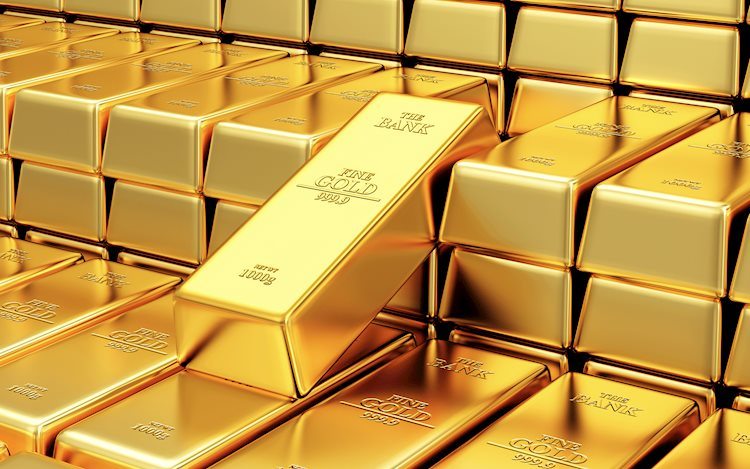Gold prices rose in India on Wednesday, according to data from India’s Multi Commodity Exchange (MCX).
Gold price stood at 61,618 Indian Rupees (INR) per 10 grams, up INR 389 compared with the INR 61,229 it cost on Tuesday.
As for futures contracts, Gold prices increased to INR 62,820 per 10 gms from INR 62,722 per 10 gms.
Prices for Silver futures contracts decreased to INR 77,150 per kg from INR 76,993 per kg.
| Major Indian city | Gold Price |
|---|---|
| Ahmedabad | 63,790 |
| Mumbai | 63,625 |
| New Delhi | 63,725 |
| Chennai | 63,780 |
| Kolkata | 63,810 |
An automation tool was used in creating this post.
Global Market Movers: Comex Gold price renews six-month highs on Fed rate cut bets
- The US Dollar dives to over a three-and-half-month low amid rising bets for a series of rate cuts by the Federal Reserve in 2024 and continues to boost the Comex Gold price.
- Fed Governor Christopher Waller said on Tuesday that he could see a point where the central bank might start lowering rates if inflation continues to ease over the next few months.
- Waller added that he is increasingly confident that policy is currently well-positioned to slow the economy and get inflation back to the central bank’s 2% target.
- Fed Governor Michelle Bowman offered a contrasting view and reiterated her belief that more rate hikes likely will be needed as evolving dynamics keep inflation elevated.
- Markets expect the Fed to hold its key lending rate steady in a target range between 5.25%-5.5% in December, though officials have stressed the need to remain vigilant on inflation and keep their options open.
- The Israel-Hamas ceasefire deal has been extended by two days beyond its original expiration on Tuesday morning, which could dim the metal’s safe-haven appeal.
- Hamas released about 50 hostages as part of the original agreement and is expected to free another 20 over the next two days in exchange for the release of Palestinian prisoners by Israel.
- Traders now look to the prelim US GDP report, which is expected to show that the world’s largest economy expanded by a 5% annualized pace during the third quarter as against the 4.9% estimated.
Gold FAQs
Gold has played a key role in human’s history as it has been widely used as a store of value and medium of exchange. Currently, apart from its shine and usage for jewelry, the precious metal is widely seen as a safe-haven asset, meaning that it is considered a good investment during turbulent times. Gold is also widely seen as a hedge against inflation and against depreciating currencies as it doesn’t rely on any specific issuer or government.
Central banks are the biggest Gold holders. In their aim to support their currencies in turbulent times, central banks tend to diversify their reserves and buy Gold to improve the perceived strength of the economy and the currency. High Gold reserves can be a source of trust for a country’s solvency. Central banks added 1,136 tonnes of Gold worth around $70 billion to their reserves in 2022, according to data from the World Gold Council. This is the highest yearly purchase since records began. Central banks from emerging economies such as China, India and Turkey are quickly increasing their Gold reserves.
Gold has an inverse correlation with the US Dollar and US Treasuries, which are both major reserve and safe-haven assets. When the Dollar depreciates, Gold tends to rise, enabling investors and central banks to diversify their assets in turbulent times. Gold is also inversely correlated with risk assets. A rally in the stock market tends to weaken Gold price, while sell-offs in riskier markets tend to favor the precious metal.
The price can move due to a wide range of factors. Geopolitical instability or fears of a deep recession can quickly make Gold price escalate due to its safe-haven status. As a yield-less asset, Gold tends to rise with lower interest rates, while higher cost of money usually weighs down on the yellow metal. Still, most moves depend on how the US Dollar (USD) behaves as the asset is priced in dollars (XAU/USD). A strong Dollar tends to keep the price of Gold controlled, whereas a weaker Dollar is likely to push Gold prices up.
Read the full article here

